The 19th-Century Law Behind the Oregon Standoff
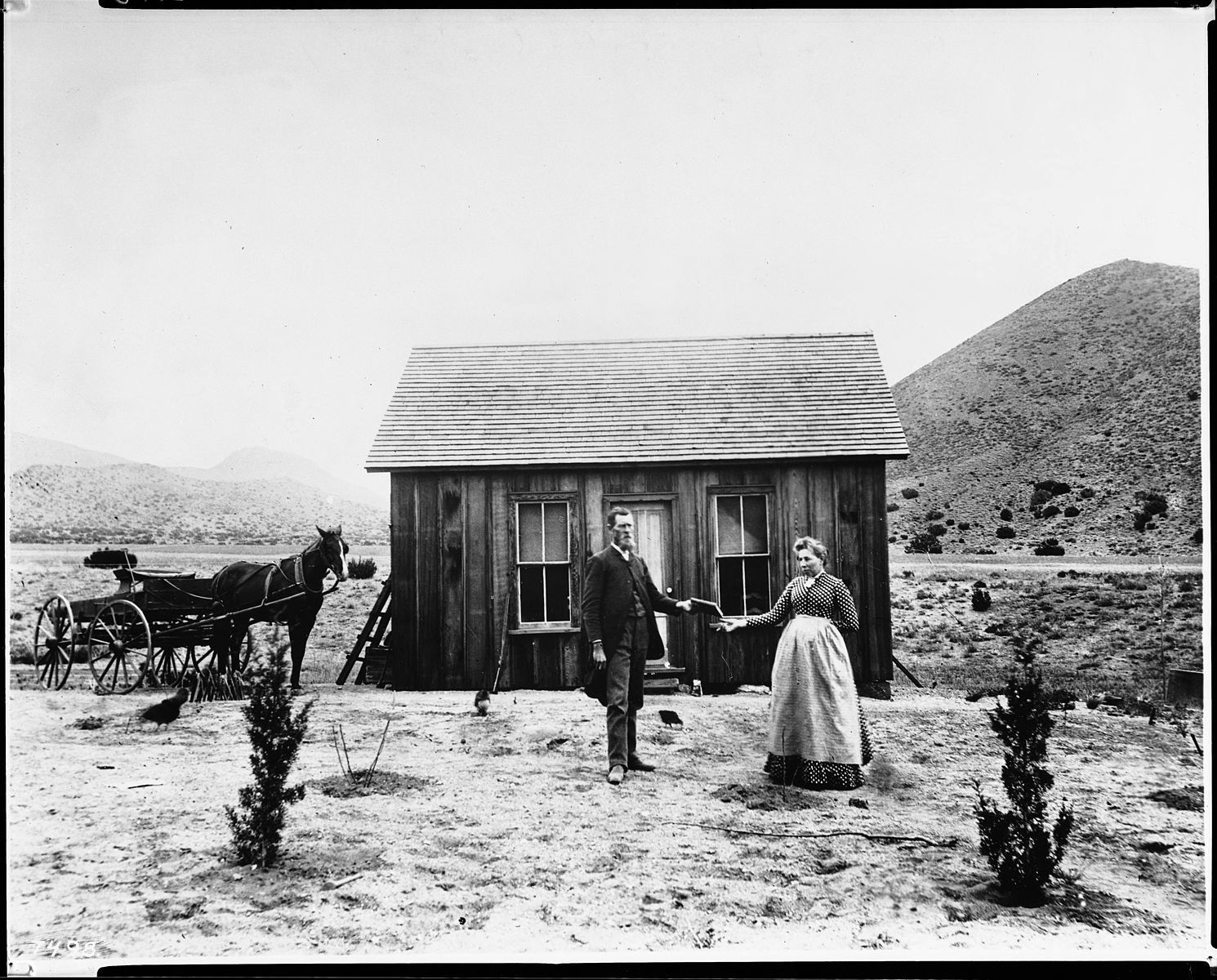
A California homesteader receives the deed to her land. (Photo: Charles C. Pierce/USC Libraries Public Domain)
For many people, public land is an untrammeled good. Places like the Malheur National Wildlife Refuge are paradises for hikers and safe havens for endangered species like snowy owls. But for a particular subset of miners and ranchers, government land ownership is a deep wound, one they see as a promise that has since been broken–part of an obscure ongoing fight over a piece of legislation that is over 150 years old, called the Homestead Act of 1862.
This is why, on Saturday afternoon, a group of armed protesters broke off from a larger rancher’s rights demonstration in Burns, Oregon, and drove about 30 miles southeast to the Malheur National Wildlife Refuge. They then proceeded to take over a small federal office building, which was empty for the holidays. Reporters and law enforcement who have since tried to access the scene have been greeted by a pickup truck blockade and armed guards decked out in camo. (The FBI is currently working to bring a “peaceful” end to the situation, but won’t provide further details.)
FBI takes helm of efforts to end militia occupation in Oregon https://t.co/tNgCqcfvah pic.twitter.com/ykuAbJkcqp
— CBS News (@CBSNews) January 4, 2016
Why all the fuss over a rural animal outpost? While coastal Americans argue about Uber surge pricing, a fight for the control of federal land has been brewing for almost 200 years. The symbolic “reclamation” of public land, away from governments and back to the people, dates back to an obscure Civil War-era law that changed the rules of Western settlement.
The key question–one of the first to ever dog American legislators–can be boiled down to, “Who is in control of the West?”
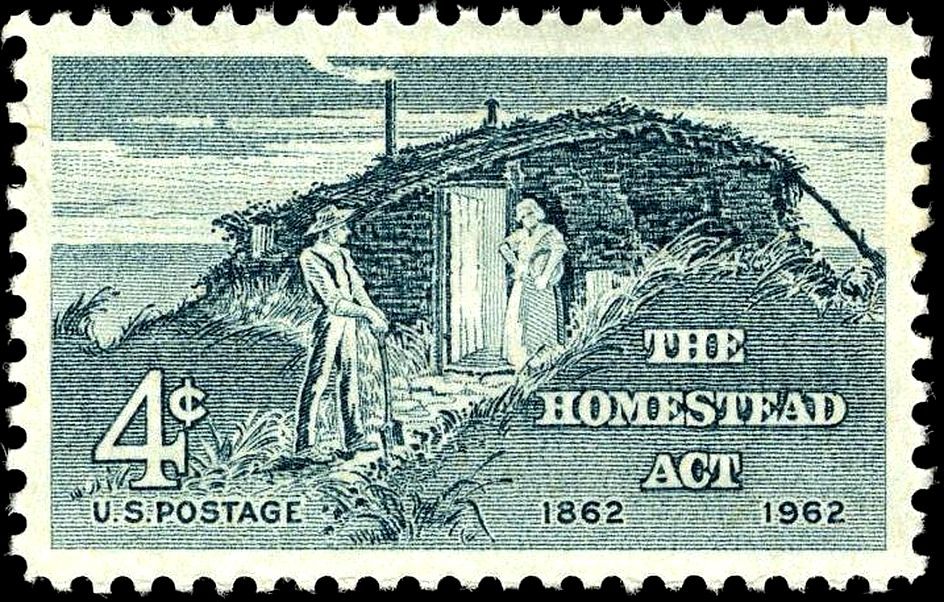
A U.S. Postage stamp celebrating the hundred-year anniversary of the Homestead Act. (Image: WikiCommons/Public Domain)
According to a 2012 Congressional Research Service report, the answer is pretty clear: the United States government currently owns about 47 percent of the American West. This does not sit well with protesters like Ammon Bundy, son of the infamous Cliven Bundy, who explains in a Facebook video that he and his compatriots consider land-owning federal entities like the Bureau of Land Management to be “taking property away from the American people,” and regulators like the Environmental Protection Agency to be “restricting full industries,” like logging, mining, and ATV joyriding. The protesters want the land returned to local authorities, and will stay holed up in Malheur for, Ammon says, “as long as it takes.”
Land ownership has always riled up American citizens. In the 1770s and ‘80s, the ratification of the Articles of Confederation–the first attempt at a Constitution–slowed to a crawl when no one could agree on which Eastern states owned particular swaths of land. Connecticut and New York fought over bits of Ohio, and Georgia refused to let go of Alabama. It took 20 years for all the states to surrender their Western claims to a central government.
When they finally did, that government, hoping to boost its young treasury, began selling the land back to individual settlers in parcelled-out chunks of 640 acres. At about a dollar an acre–which sums up to about $8,800 in today’s money–this was far too steep a price for most aspiring landowners. Over the following decades, evolving laws made things slightly more affordable, but it wasn’t enough–as historians Lee Ann Potter and Wynell Schamel put it, “national public-land-use policy made land ownership financially unattainable for most would-be homesteaders.”
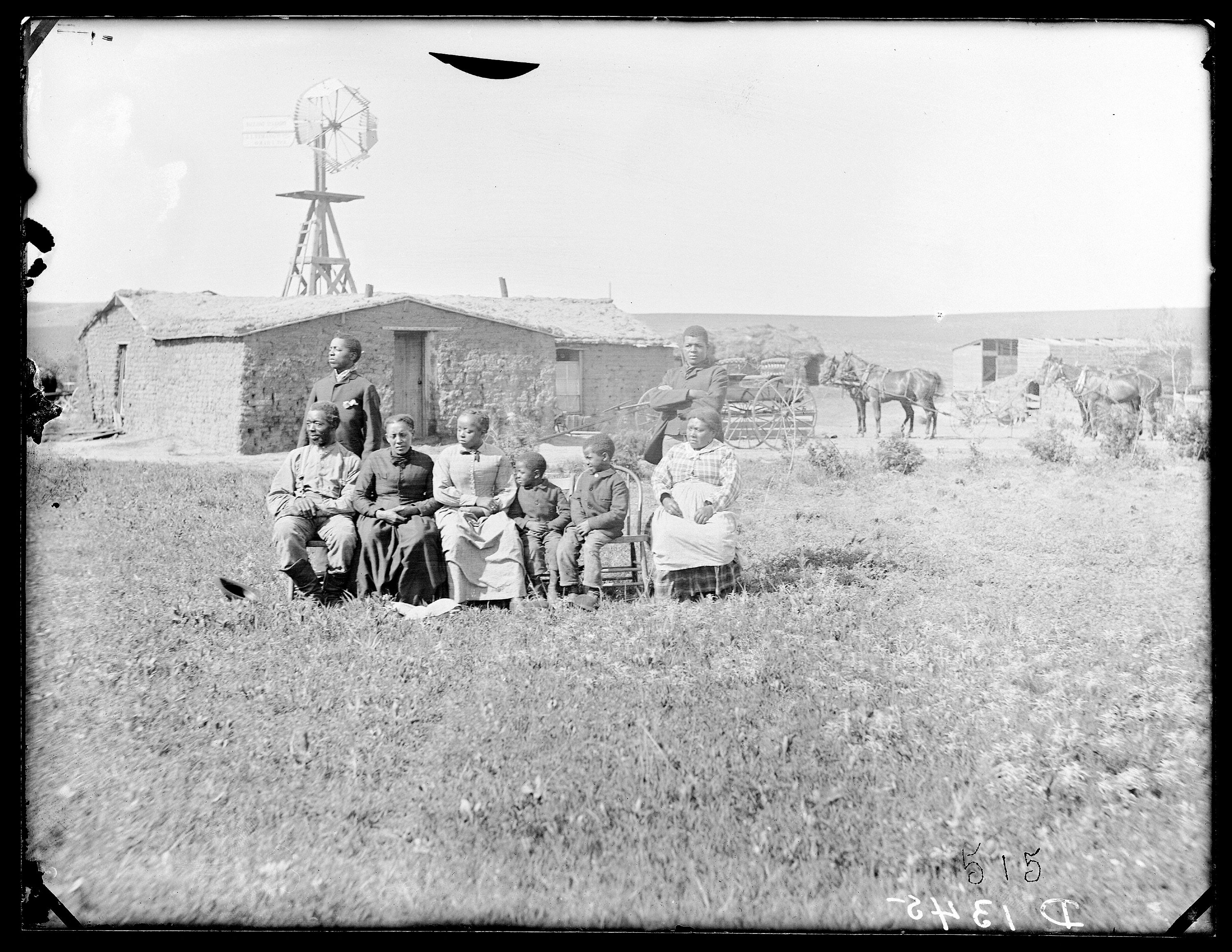
19th-century homesteaders pose in front of their Nebraska farm. It’s important to note that, though all intended citizens could become homesteaders, not everyone could become intended citizens. (Photo: Library of Congress/Public Domain)
Shifting demographics changed the political mood. In the years leading up to the Civil War, so-called “homesteading”–giving people land for free, providing they proved they would take care of it–became a pet cause of many Northerners, who worried that without it, the West would become a patchwork of plantations, leaving individual farmers with leftover scraps. Meanwhile, factory owners, who feared losing their labor pool to the call of manifest destiny, and Southerners, who predicted the West would turn into a cabal of free states that would vote against slavery, successfully opposed multiple homesteading bills in the Senate.
The Civil War removed this obstacle, and on May 20th, 1862, Abraham Lincoln signed the first Homesteading Act into law. Under this Act, very nearly any citizen or intended citizen–man, woman, immigrant, freed slave, “without regard to… nationality”–could apply for 160 acres of public land. After this person had spent five years living on and improving that land, they could then file for the deed to it, after which the land was officially theirs.
The law spelled out only one exception towards eligibility: Citizens who had “borne arms against the United States Government.”
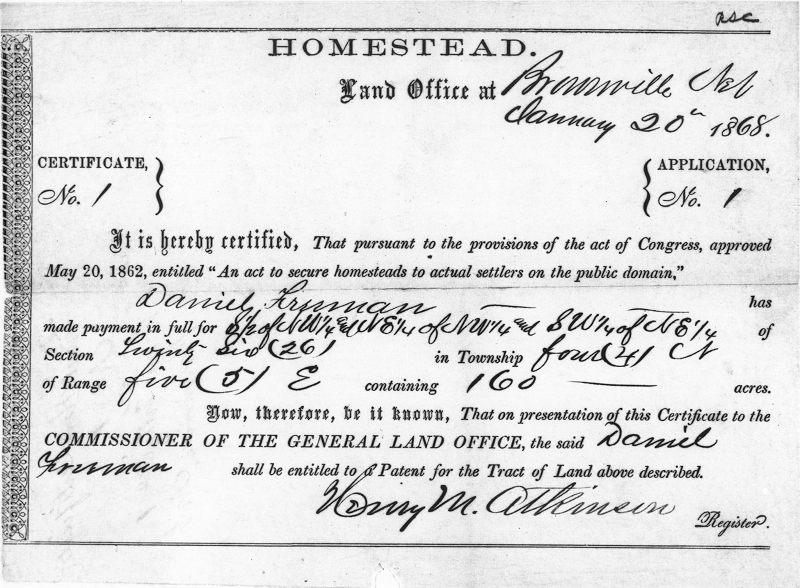
The first ever homesteading deed–granted to Daniel Freeman in January 1868, after he had worked the land for 5 years. (Image: WikiCommons/Public Domain)
Numbers-wise, the Homestead Act was a smashing success–a century after its introduction, aspiring settlers had claimed 420,000 square miles of territory, a full 10 percent of the government’s holdings. But by certain other measures, the Homestead Act didn’t work as intended. While super-cheap land is a good start, it takes more than that to build a farm, and most people who ended up with a parcel found they lacked a number of other necessary resources–tools, seeds, and livestock, for instance. In addition, “the act was framed so ambiguously that it seemed to invite fraud,” the National Archives writes, and “most of the land went to speculators, cattlemen, miners, lumbermen, and railroads,” who would hire individuals to claim land and then clump it all together. (The Bundy ancestors, who Cliven claims homesteaded his ranch in 1877, may have done this.) People would claim whole tracts and rent them out in smaller parcels, or file for land containing a spring and then charge everyone downstream for use of the water.
Some exploited loopholes in the Act’s language. At least a few people, told they needed to build a “12-by-14 dwelling” in order to prove residency, built a 12-inch by 14-inch dwelling—about the size of a shoebox.
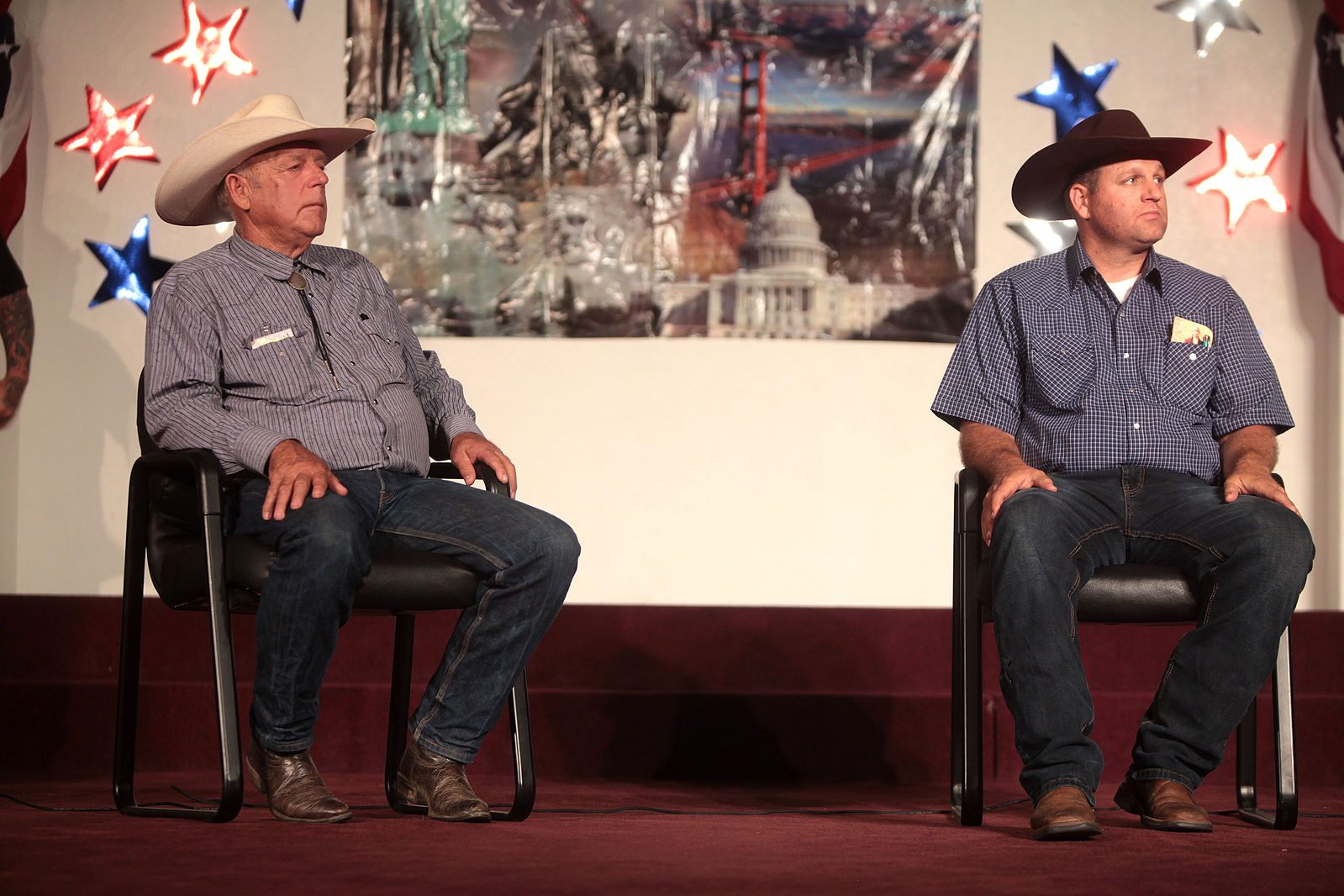
Cliven and Ammon Bundy, speaking at a constitutional forum in Arizona in July 2014. (Photo: Gage Skidmore/WikiCommons CC BY-SA 2.0)
In 1976, the Homestead Act was officially repealed everywhere but Alaska, and control of public lands was returned to the federal government, who began to manage it for a number of purposes–recreation, conservation, mining, and grazing, to name a few. As with any situation involving a number of stakeholders, this has led to a series of waxing and waning conflicts. In the late 1970s, we got the Sagebrush Rebellion, a direct response to the repeal of the Homestead Act that mostly took the form of legislative land grabs, and fizzled out when Ronald Reagan was elected. Throughout the 1990s, Nevada cattle ranchers repeatedly bombed the U.S. Forest Service. In 2014, Cliven Bundy and 50 supporters threatened federal officials who came to collect 20 years’ worth of unpaid grazing fees. And this weekend at Malheur, in a strange, mirror-world version of the Homestead Act, an unspecified number of intended sovereign citizens have settled on public land, and claimed it as theirs.
Of course, if the Homestead Act were indeed still in place, the group in question wouldn’t have even passed the first hurdle–having taken up arms against the government, they would not be allowed to claim any land at all.
Update, 1/4: The original version of this article said that the resolution of the Civil War removed obstacles to the passage of the Homestead Act. It was actually the start of the war that removed these obstacles. Thanks to Tom Benson for the correction, and we regret the error.







Follow us on Twitter to get the latest on the world's hidden wonders.
Like us on Facebook to get the latest on the world's hidden wonders.
Follow us on Twitter Like us on Facebook